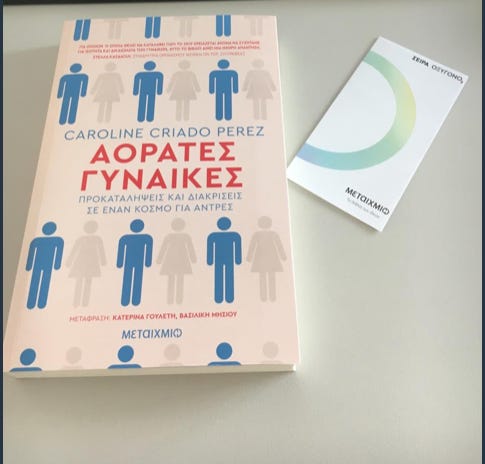Invisible Women Issue 6: Lost in Translation
Hello my dear GFPs and welcome issue 6 of Invisible Women: The Newsletter.
First up, ευτυχισμένη ημέρα δημοσίευσης σε μένα, as today Invisible Women comes out in Greek! Here is a pic of it looking very lovely 😍

I was particularly excited to find that the title in Greek transliterates to "Aorates Gynaikes" which I believe is gyn as in gynaecology. I can't…
